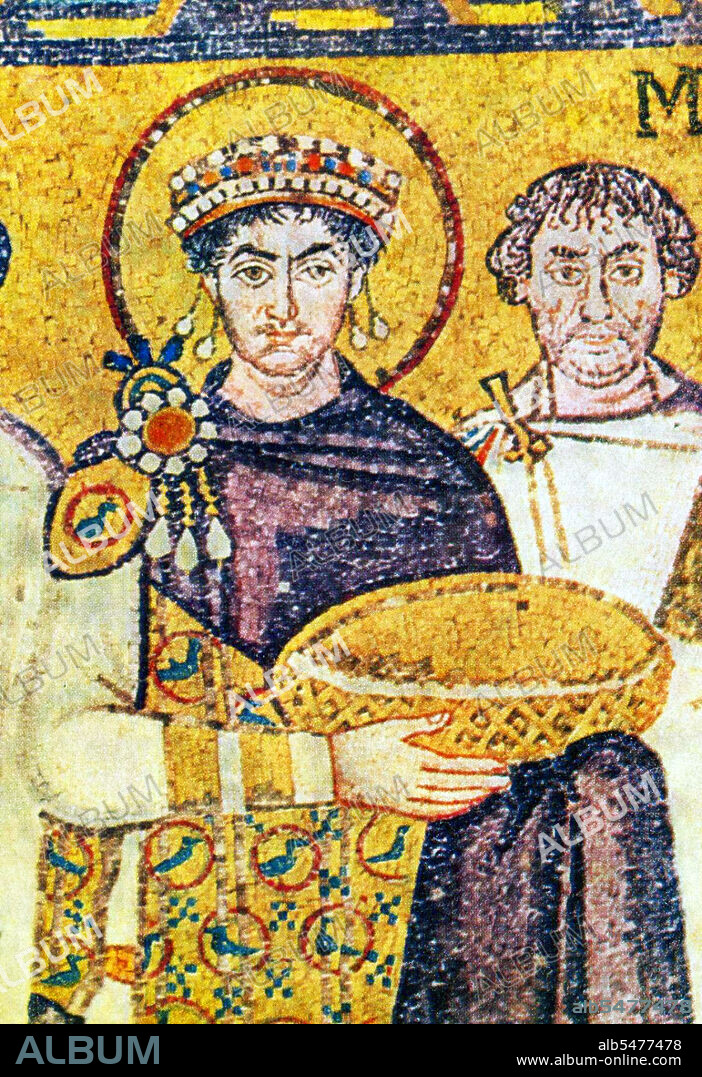alb5477478
The Byzantine Emperor Justinian I dressed in Tyrian Imperial Purple robes.

|
Ajouter à une autre Lightbox |
|
Ajouter à une autre Lightbox |



Avez-vous déjà un compte? S'identifier
Vous n'avez pas de compte ? S'inscrire
Acheter cette image.
Sélectionnez l'usage:

Titre:
The Byzantine Emperor Justinian I dressed in Tyrian Imperial Purple robes.
Légende:
Voir la traduction automatique
Justinian I (Latin: Flavius Petrus Sabbatius Iustinianus Augustus, c. 482 14 November 565), commonly known as Justinian the Great, was Byzantine Emperor from 527 to 565. During his reign, Justinian sought to revive the Empire's greatness and reconquer the lost western half of the classical Roman Empire. Tyrian purple, also known as royal purple, imperial purple or imperial dye, is a purple-red natural dye, which is a secretion produced by certain species of predatory sea snails in the family Muricidae, a type of rock snail by the name Murex. This dye was probably first used by the ancient Phoenicians. The dye was greatly prized in antiquity because the color did not easily fade, but instead became brighter with weathering and sunlight. Tyrian purple was expensive: the 4th-century-BC historian Theopompus reported, 'Purple for dyes fetched its weight in silver at Colophon' in Asia Minor. The expense meant that purple-dyed textiles became status symbols, and early sumptuary laws restricted their uses. The production of Tyrian purple was tightly controlled in Byzantium and was subsidized by the imperial court, which restricted its use for the colouring of imperial silks, so that a child born to a reigning emperor was styled 'porphyrogenitos' or 'born in the purple'.
Crédit:
Album / Pictures From History/Universal Images Group
Autorisations:
Taille de l'image:
3500 x 5109 px | 51.2 MB
Taille d'impression:
29.6 x 43.3 cm | 11.7 x 17.0 in (300 dpi)
Mots clés:
ART (CATÉGORIE) • ART • ART, MOSAIQUE • ASIE • ASIE, CONTINENT • BYZANTIN • BYZANTINE • CONTINENT ASIE • EMPEREUR • EMPEREURS • HISOIRE • HISTOIRE • ITALIE • ITALIEN • ITALIENNE • JUSTINIANO I • MOSAIQUE • MOSAÏQUES • ROI • SOUVERAIN EMPEREUR • TITRE, EMPEREUR


 Pinterest
Pinterest Twitter
Twitter Facebook
Facebook Copier le lien
Copier le lien Email
Email
